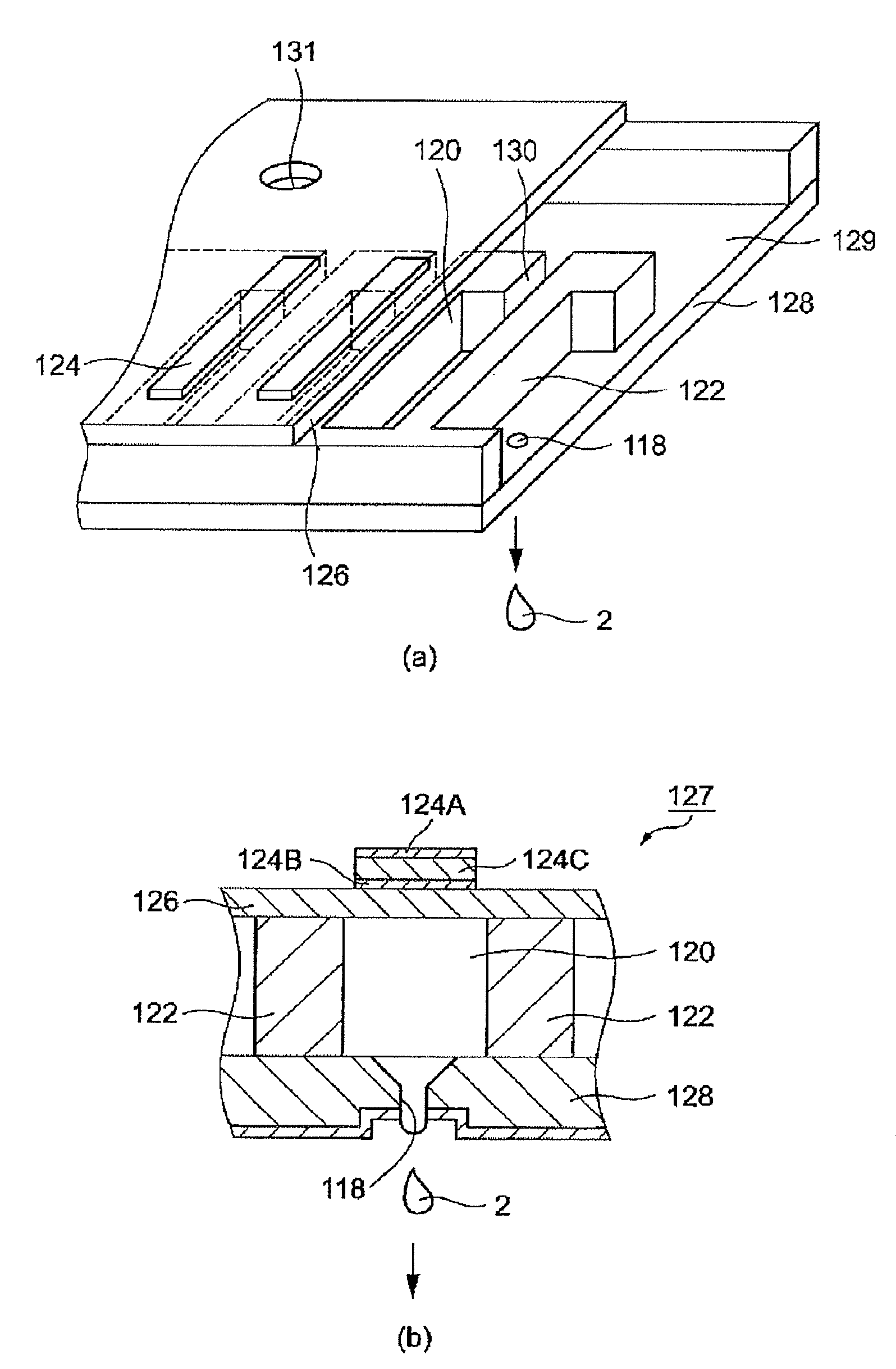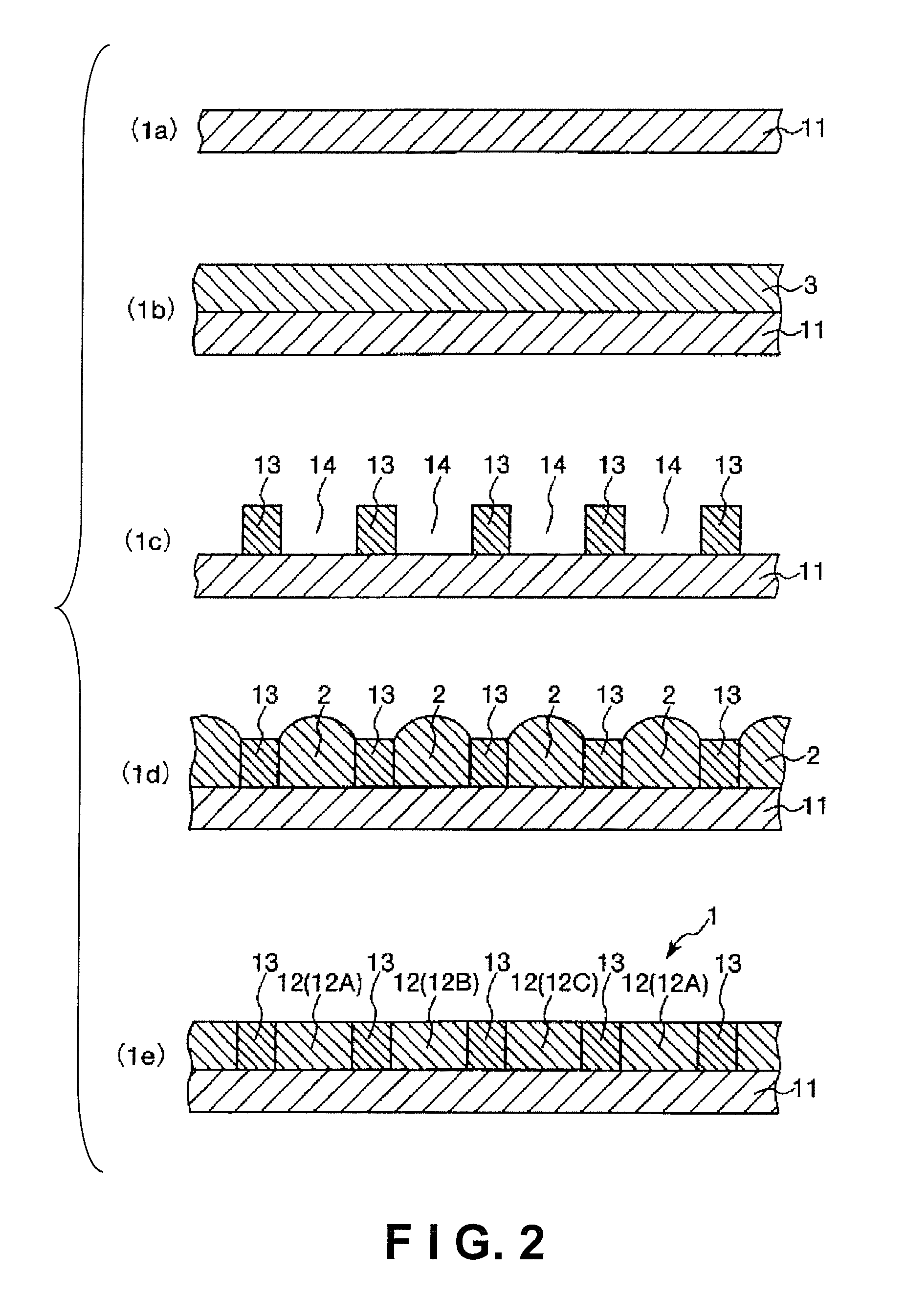Color filter ink, color filter ink set, color filter, image display device, and electronic device
a technology of color filter and ink, which is applied in the field of color filter ink, color filter ink set, image display device, electronic device, etc., can solve the problems of difficult to accommodate the higher luminance demanded of display image in recent years, increase in the manufacturing cost of color filter, and inability to produce color filter ink, etc., to achieve excellent uniformity of characteristics, suppress uneven color saturation between regions of display section, and excellent durability
- Summary
- Abstract
- Description
- Claims
- Application Information
AI Technical Summary
Benefits of technology
Problems solved by technology
Method used
Image
Examples
synthesis example 1
[0307]37.6 parts by weight of 1,3-butylene glycol diacetate was placed as a solvent in a 1-L reaction container provided with an agitator, a reflux condenser, a dropping funnel, a nitrogen introduction tube, and a temperature gauge, and heated to 90° C. Next, 2 parts by weight of 2,2′-azobis(isobutyronitrile) (AIBN) and 3 parts by weight 1,3-butylene glycol diacetate (solvent) were added, after which 30 parts by weight of γ-methacryloxypropyl trimethoxysilane (product name: SZ6030, manufactured by Dow Corning Toray) was dropped in for approximately four hours using a dropping pump. Meanwhile, a solution (polymerization initiator solution) in which 5 parts by weight of dimethyl 2,2′-azobis(isobutyrate) (product name V-601, manufactured by Wako Pure Chemical Industries) as the polymerization initiator were dissolved in 20 parts by weight of 1,3-butylene glycol diacetate (solvent) was dropped over for approximately four hours using a separate dropping pump. After the dropping of the po...
synthesis examples 2 to 6
[0308]The same operation as Synthesis Example 1 described above was carried out, except that the type of monomer components, usage amounts, and type of solvent used in the synthesis of the polymer (preparation of the polymer solution) were varied in the manner shown in Table 1. As a result, five polymer solutions (polymer solutions A2 to A6) containing a polymer A were obtained.
synthesis example 7
[0309]The polymer solution was the same as in Synthesis Example 1 except that instead of 30 parts by weight of γ-methacryloxypropyl trimethoxysilane (product name: SZ6030, manufactured by Dow Corning Toray), 24 parts by weight of (3,4-epoxy cyclohexyl)methyl methacrylate (product name Cyclomer M100, manufactured by Daicel Chemical Industries) and 6 parts by weight of 1H,1H,5H-octafluoropentyl methacrylate (product name Biscoat 8FM, manufactured by Osaka Organic Chemical Industry) were used. As a result, a polymer solution (polymer solution B1) containing a polymer B was obtained.
PUM
| Property | Measurement | Unit |
|---|---|---|
| particle size | aaaaa | aaaaa |
| particle size | aaaaa | aaaaa |
| boiling point | aaaaa | aaaaa |
Abstract
Description
Claims
Application Information
 Login to View More
Login to View More - R&D
- Intellectual Property
- Life Sciences
- Materials
- Tech Scout
- Unparalleled Data Quality
- Higher Quality Content
- 60% Fewer Hallucinations
Browse by: Latest US Patents, China's latest patents, Technical Efficacy Thesaurus, Application Domain, Technology Topic, Popular Technical Reports.
© 2025 PatSnap. All rights reserved.Legal|Privacy policy|Modern Slavery Act Transparency Statement|Sitemap|About US| Contact US: help@patsnap.com



